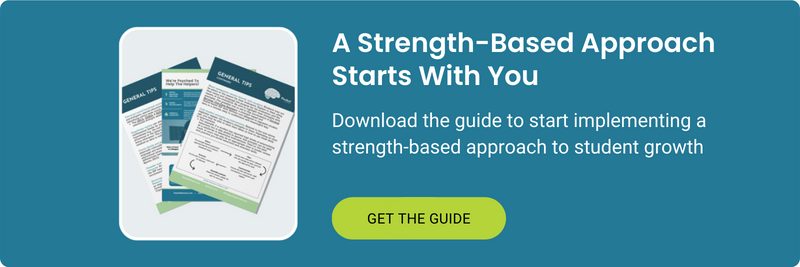Is it a Learning Disability in Written Expression?

By Maria Gregory and Marysa Enis
An Overlooked Disability
It’s high tide in referral season and if you are reading this, chances are you know a student who is being assessed for special education. And if you know a student who is being assessed for special education, chances are that student has difficulty with writing.
How do we know? Well, the act of writing has brought many a child to tears, and not just those with disabilities. There are endless rules to memorize and details to check. There is making sure handwriting is neat and spacing is right. There is brainstorming and organizing ideas, which by itself is enough to break a lot of kids. It’s no wonder that writing is the last skill to develop and the hardest to teach.
But developing basic skills in writing is important. Research has shown that taking notes by hand increases retention. On top of that, the act of writing allows children to formulate thoughts and enrich critical thinking skills. Above all else, writing is a major form of communication, arguably now more than ever.
Unfortunately, written expression is a vastly underestimated skill for rigor across all levels of education. Because of this, challenges are often overlooked in ways they aren’t in reading and math. And while writing may be begrudged by many children, for some, it’s out right painful. When it’s painful, it could be due to a learning disability in written expression.
Common signs of a problem
- Mistakes when copying
- Odd pencil grip
- Poor spelling, punctuation, or grammar
- Tiring quickly and complaining that writing is hard
- Illegible handwriting, difficulty writing on a straight line, and too much or too little space between letters/words
- Letter/word reversals
- Writing more slowly and with more effort than others
- Difficulty coming up with or explaining ideas
- Jumping from topic to topic
- Family history of difficulty with learning
What is a Learning Disability in Written Expression?
In the past, you may have heard it called dysgraphia, which simply means “impaired writing by hand.” But in what way is writing impaired? And why? Having a learning disability doesn’t just mean that writing is hard. It means that writing is hard because of a reason, and that reason is brain-based.
Common Causes
- Delayed Visual Processing
- Poor fine-motor coordination
- Difficulty with planning, attention, and short-term memory
- Poor long-term memory
- Delayed oral language
- Poor phonemic awareness and processing
How To Help
Difficulty with writing does not necessarily mean that a student has a learning disability or requires special education services. The following tools are simple and effective ways to help students.
Interventions for Tier 1 and 2:
Check out The Learning Grids website For thousands of Free tools
- Free-writing exercises
- Graphic organizers, such as C.O.P.S. (Capitalization, Punctuation, Organization, and Spelling)
- Mneumonics for remembering grammar rules
- Idea and sentence starters
- Writing checklists
- Writing grids, such as highlighted paper or raised line paper
- Assistive technology, such as digital word walls, speech-to-text, or word prediction software
Interventions for Tier 2 and 3:
- Handwriting Without Tears and Keyboarding Without Tears
- Visualizing and Verbalizing (Lindamood-Bell)
- Speech and language therapy (if eligible due to deficits in oral language)
- Occupational therapy (if eligible due to deficits in motor-coordination)





(4).png?width=352&name=Untitled%20(300%20x%20175%20px)(4).png)